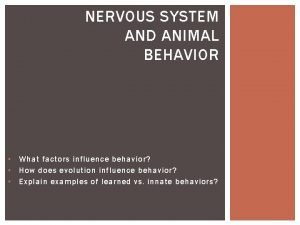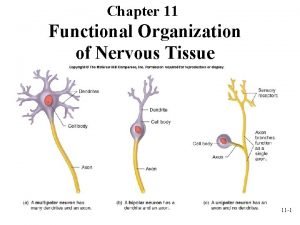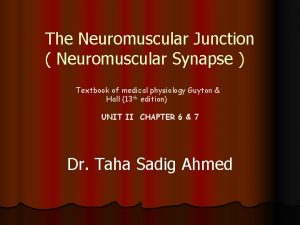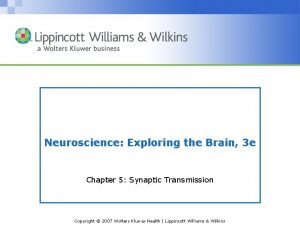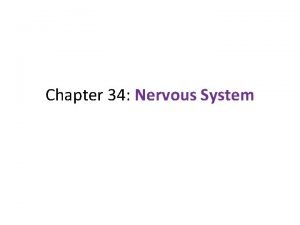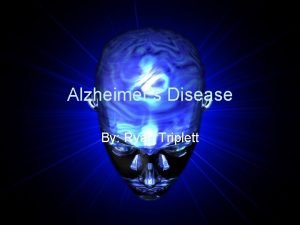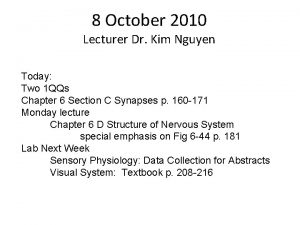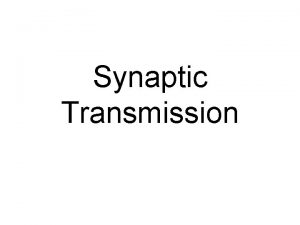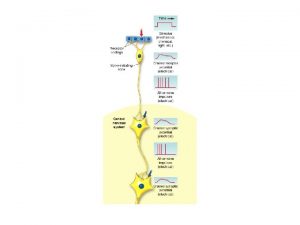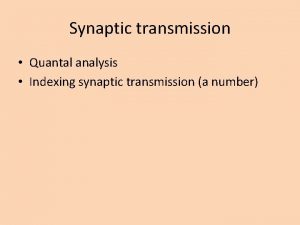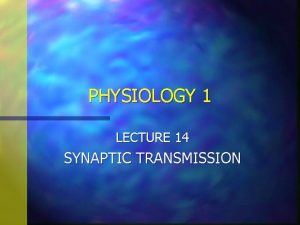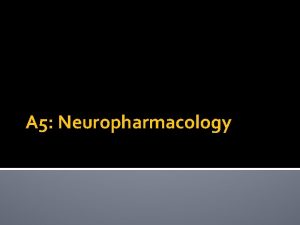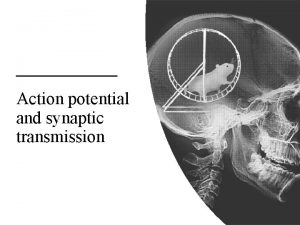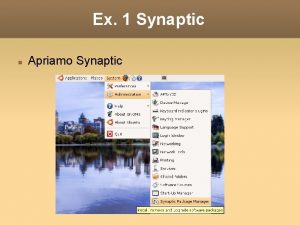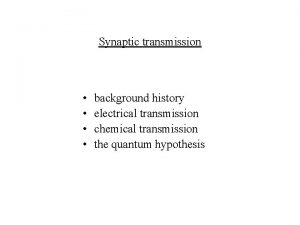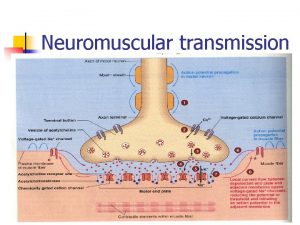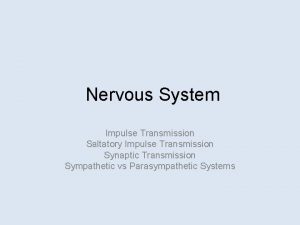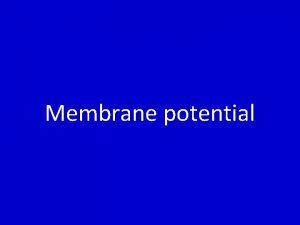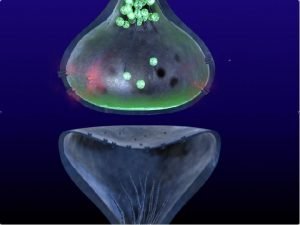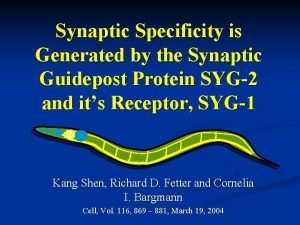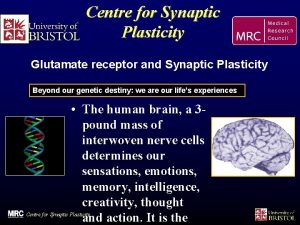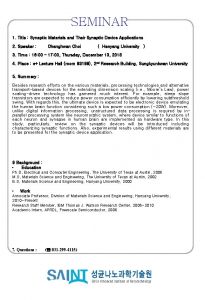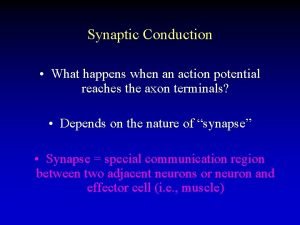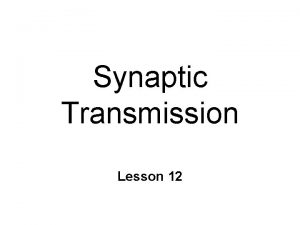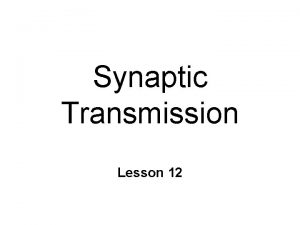Synaptic Transmission Lesson 11 Synaptic Events Action Potential























- Slides: 23

Synaptic Transmission Lesson 11

Synaptic Events Action Potential reaches axon terminal n Chemical substance released l Neurotransmitter (NT) n Diffuses across synapse n Binds to receptor protein l EPSP or IPSP ~ n

Synaptic Transmission Model 1. 2. 3. 4. 5. 6. Precursor transport NT synthesis Storage Release Activation Termination ~

Presynaptic Axon Terminal Button Postsynaptic Membrane Dendritic Spine

1. Precursor Transport

1. Precursor Transport

2. Synthesis Enzymes & cofactors ~ E

3. Storage E

3. Storage In vesicles Terminal Button Dendritic Spine Synapse

4. Release • via exocytosis • diffusion Ca++

4. Release • via exocytosis • diffusion AP Ca++ Synapse

4. Release • via exocytosis • diffusion Ca++

Exocytosis: Membrane Fusion n Ca 2+ influx 2+ -Calmodulin l. Ca lsynapsin SNAPs lsoluble-NSF-attachment proteins l. Cell membrane SNAREs l. SNAP receptors l. Vesicle & cell membrane~

5. Activation l NT binds to receptor

Activation n NT binds to postsynaptic receptor l opens ion channel l EPSP u. Na+ l into cell or IPSP u. K+ out of cell ~

6. Termination l 4 basic methods

6. Termination l diffusion

6. Termination l Enzymatic degradation

6. Termination l Presynaptic reuptake uactive transport

6. Termination l autoreceptors A

Autoreceptors On presynaptic terminal n Binds NT l same as postsynaptic receptors l different receptor subtype n Decreases NT release & synthesis ~ n

Termination Must have discrete signal n What if ion channels continually open? l ions move toward equilibrium l membrane no longer polarized l no EPSPs or IPSPs n Disrupts neural communication n Termination neuron repolarizes ~ n

Axoaxonic Synapses Modulation of NT release n Presynaptic Facilitation l Increases NT release n Presynaptic Inhibition l decreases NT release n Via modulation of Em 2+ + - ~ l Ca , K , and Cl n
 Synaptic transmission quiz
Synaptic transmission quiz Postsynaptic potential
Postsynaptic potential Graded potential vs action potential
Graded potential vs action potential Graded potential
Graded potential Graded potentials
Graded potentials Graded potential vs action potential
Graded potential vs action potential Refractory period neuron
Refractory period neuron Source of bioelectric potential is
Source of bioelectric potential is Transmission across a synapse
Transmission across a synapse Succinylcholine dose
Succinylcholine dose Action potential resting potential
Action potential resting potential Action potential resting potential
Action potential resting potential Mutually exclusive vs non mutually exclusive
Mutually exclusive vs non mutually exclusive Synaptic trough or gutter
Synaptic trough or gutter Synaptic gutter or trough
Synaptic gutter or trough Wolters kluwer
Wolters kluwer Synaptic integration
Synaptic integration Cherrell triplett
Cherrell triplett Synaptic integration
Synaptic integration Screenless displays
Screenless displays Synaptic junction
Synaptic junction Describe capacities newborns display
Describe capacities newborns display Why is water potential measured in pascals
Why is water potential measured in pascals Water potential in plants
Water potential in plants
